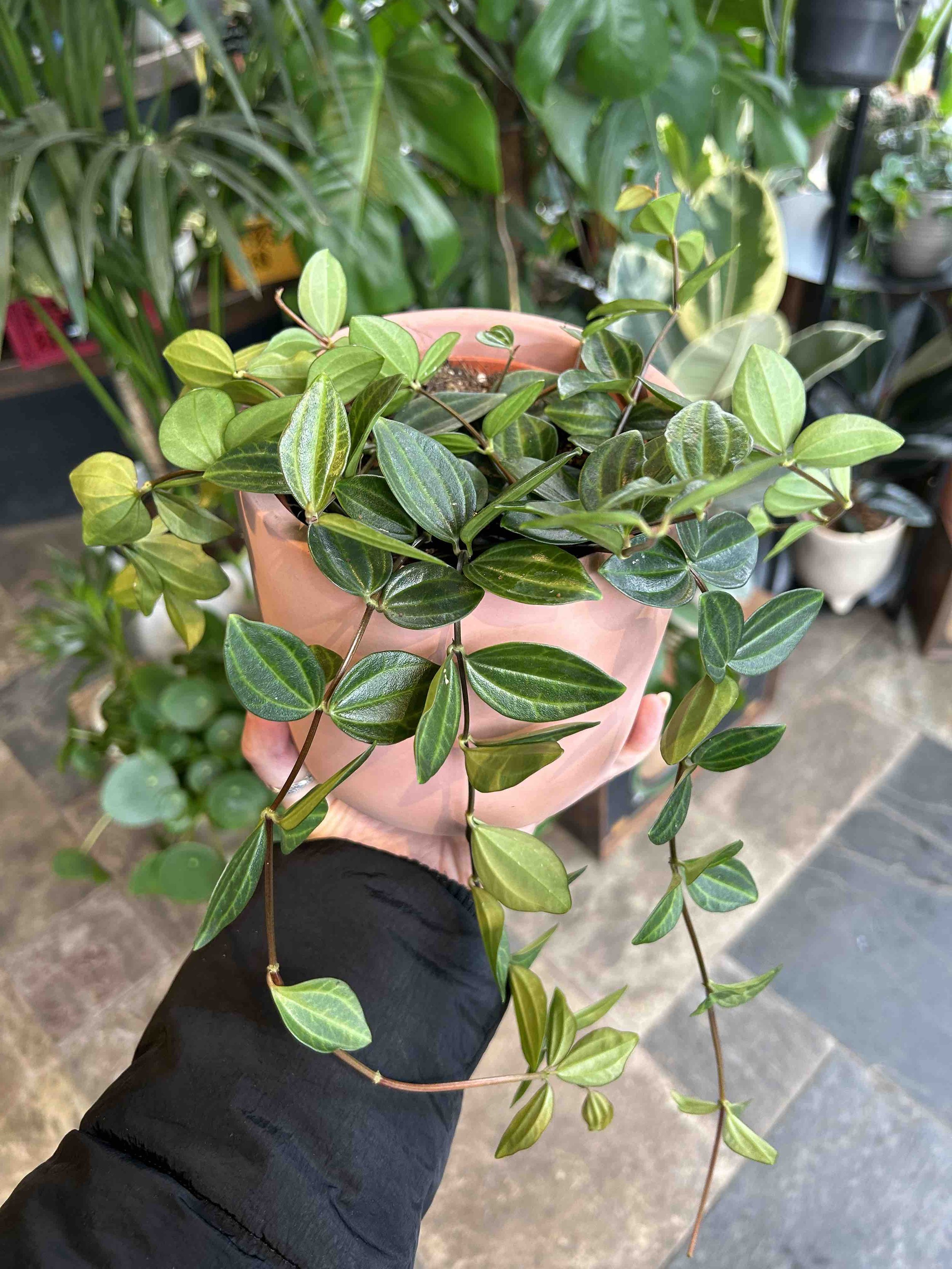Plant Profile
Beetle Plant
a.k.a. Peperomia Angulata
Hands down one of our favourites from the Peperomia gang, the Peperomia Angulata, or Beetle Peperomia is a low maintenance ‘epiphyte’ meaning it grows on trees in its natural habitat. In the home, you can let it trail from a shelf or hanging basket, or train it to climb by pinning into place. It is native to South America and its warmer climate, so keep this in mind when choosing where to place it.
Top Tips
✔ Prune your plant back to keep it in shape and encourage it to grow fuller.
Plant Care
-
This one really thrives in a medium to bright spot with indirect light. Lack of enough light will result in fading colouring on leaves.
-
The Peperomia Angulata is very similar to succulents in that it holds a lot of water in its leaves, and you only really need to water it when the soil has almost all dried out. Water from the bottom.
-
The Beetle Peperomia will survive in normal room humidity, but a little extra won’t do it any harm, due to it’s tropical background. When misting, be careful not to mist directly onto the leaves, as it can encourage leaf spots or other fungal diseases to appear. Instead, mist around the plant, or position in a bathroom or near a humidifier.
-
Fertilise during growing season, using a general purpose fertiliser.
-
Being native to the South American Tropics, the Beetle Peperomia loves warmer temperatures. 18 - 24 C is ideal for it tho thrive, but it can tolerate lower temperatures for short periods.
-
Non-toxic.
-
A great plant to propagate and can be done by stem and leaf cuttings or by division.
-
Peperomia Angulata’s have quite mall root systems which mean it doesn’t need to be repotted into a bigger pot size very frequently - this could be once every three years or so, or when you see the roots really pushing through the drainage holes of the pot it is in. Repot using a well draining soil, like a succulent soil.


Quick plant check up
Fading leaves
This is an indication that the plant is not receiving enough sunlight. Try changing the position of the plant so it receives more indirect bright light.
Loss of leaves
This can happen due to overwatering. Try refreshing the soil, and only water once the soil is near enough all dried out.
Leaf loss can also happen with sudden changes in temperature. Make sure it’s in a room where temperature is consistent.
Leaf spots
This is a common disease that can affect peperomia. Cut off any diseased foliage and spray the plant with a fungicide.



